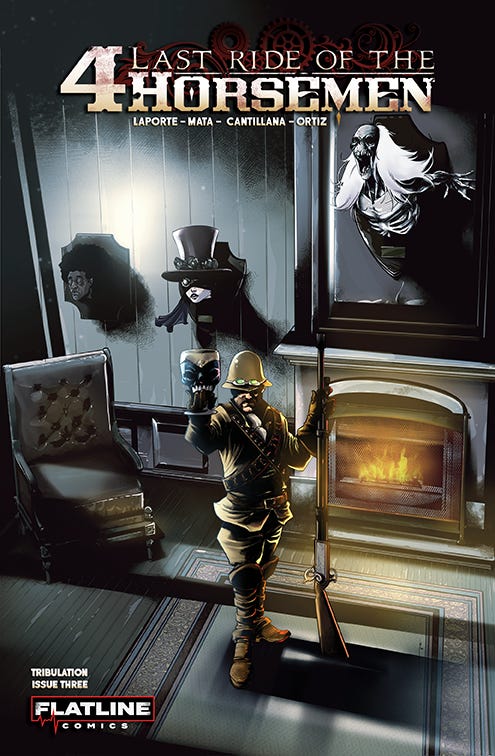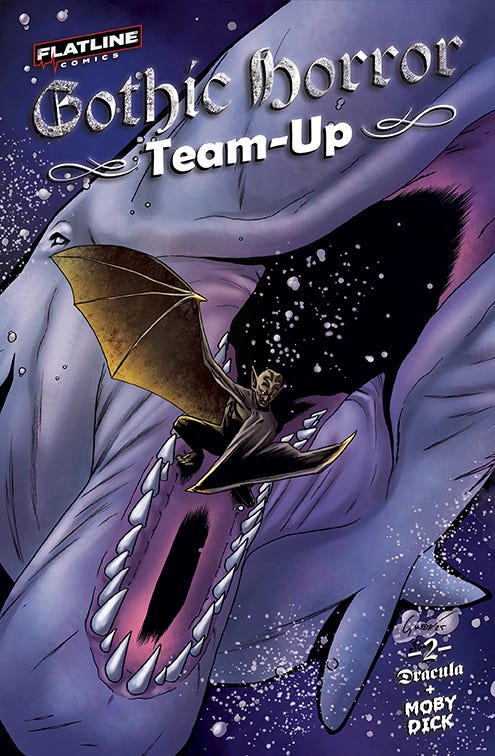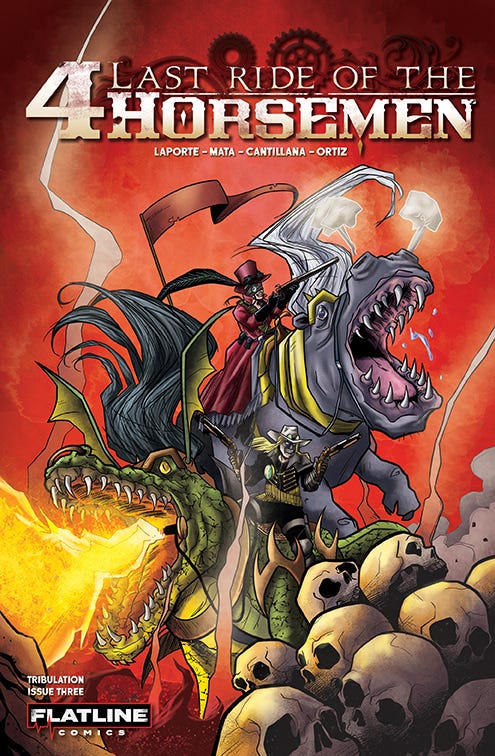Why Aren't Self-Published Comics Released on a Monthly Schedule?
Ideally, indie comics creators and self-publishers would publish series on a routine schedule, but that's just not a realistic expectation in most cases.
The past few weeks have been busy ones here at Inverse Press/Flatline Comics (aka my and Amanda’s house, haha). After a dormant period of nearly 2 months with no new comic art, the end of July brought a deluge of new pages and covers. But why did the barren months happen? Why wasn’t art coming in?’

Well, several factors conspired to basically shut our active comic art production down for those months:
Some artists are busy with other projects. To realistically make a living as an indie comics artist, they usually schedule multiple, overlapping assignments in order to stack page rates. For artists who deliver and deliver at a high level for us, I’m willing to wait until they finish up other projects.
Some artists flake and stop/slow art production to the point other arrangements must be made in order to see the project through. This happened to me recently, as detailed in another post.
The modest (understatement) production budgets of most self-publishers may require delays in art while the company creative fund is replenished by one source or another. Sometimes, circumstances and responsible financial planning require that we slow or temporarily halt production on a project while the money catches up to our aspirations.
When crowdfunding is a self-publisher’s primary source of production capital (and it is), we are subject to the calendar, as we can only manage so many funding campaigns in a year, and definitely only one at a time. We want to offer regularly scheduled releases, but we also don’t want to wear out our supporters who make our comics possible.
On September 7, I’ll launch the third installment in the Tribulation cycle of my long-running steampunk Western, Last Ride of the 4 Horsemen. The last issue was delivered in February, which is incredibly disappointing for me, but I was powerless to change the situation. The long-time artist on the book had to deprioritize the project to the point he was submitting pages monthly, which would’ve made for a release date in 2027. Not only did I have to terminate his contract, but I also had to suffer the process of finding a replacement and bringing that new artist up to speed on the project and its specific style/expectations. These things take time.

For my upcoming Gothic Horror Team-Up 2: Dracula + Moby Dick, I hoped to launch it earlier, but the fact is that I have two seasonal collections (the Vicious Circus Halloween & Christmas graphic novels) this year that must be available during their respective holiday seasons. This scheduling quirk pushes Gothic Horror Team-Up back into November, although it will be ready well in advance. This is a badass comic that I’m especially excited to get out there, so the delayed release is a necessary evil.
On top of these simple realities of limited resources, personnel, and time, direct market distribution for self-publishers is currently busted (see self-publisher Martin Pierro’s breakdown of this system breakdown RIGHT HERE), even furthering the dependence of our survival on crowdfunding. Trust me, we all want to operate like the megacorporations that fund Marvel & DC and (mostly) release titles on monthly (or more frequent) bases, but that would be reckless. Most of us are doing the best we can, with priority on making comics that are 1) good and 2) unique, qualities difficult to find in the mainstream these days.
Patience pays off in better and fresher comics, and it’s worth it. Hang in there with us.
Have a great week!
Thanks for making comics with me —
Kevin




From a fan perspective I read Deadworld as a kid/teen, so I learned early on the further you get from the bigger companies (people I talk comics with look at me like I got five heads when I call things like Dark Horse big but dangit a quarter billion dollar valuation for a company to be acquired is big in this industry) the less consistent an ongoing title's release rate will be. But also, the more experiments and non-paint by numbers stories will be in existence. It's healthy trade-off as a reader in my opinion.
From a creator standpoint, I've finally finished a first comic script for a mini to submit to anthologies once drawn and rather than the typical (in my opinion) mistake of writing exactly like I do for prose with it, meaning dialogue and exposition heavy, I went as hard as I could into the visual medium, adapting one of my short stories with no dialogue and a heavy reliance on the art once I raise the dough and get it drawn. Guess what kind of pause I'm on? If you guessed the build resources pause for art you're correct!
It's definitely illuminating, one can write until the cows come home but this whole medium depends on those incredibly talented folks with a pencil and pen and far more skill than I possess and there's just only so many of them taking page commissions. It's been an interesting look for sure as a lifelong comic nerd.
That's interesting because inconsistent publishing schedules was what launched the webtoon industry in the early days.
The weekly publishing system, minimum guarantees, and in-house editing staff was all predicated on audience retention being tied to a consistent and predictable publishing schedule.